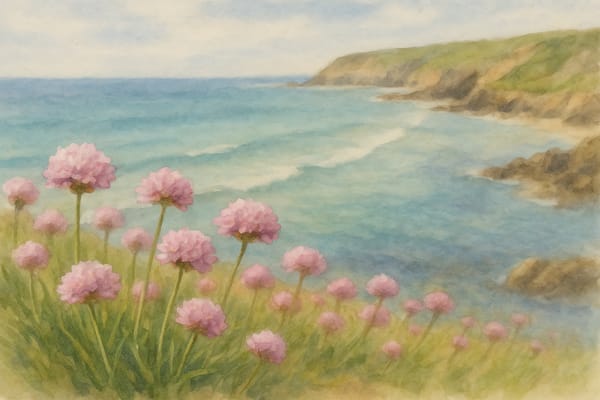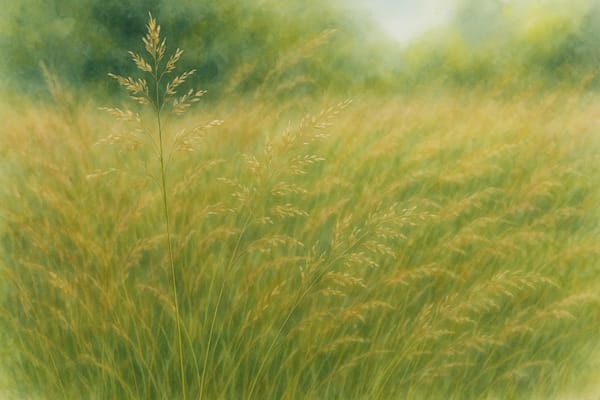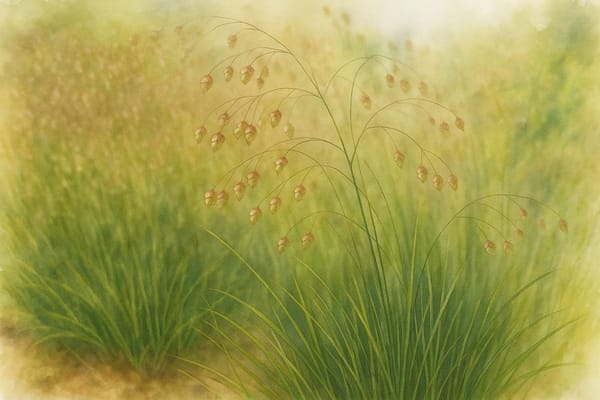Armeria maritima
Brightening the cliffs of Cornwall with clouds of soft pink, Thrift – also known as Sea Pink – is one of the most iconic wildflowers of the British coastline. But beyond its charming appearance lies a deep connection to place, resilience, and even national identity.
A Cultural Emblem of Frugality and Strength
Thrift is more than a pretty face on a wind-battered headland. Across the UK, it has come to represent frugality, endurance, and quiet determination – qualities that echo the very landscapes it calls home.
- National Symbolism: Thrift appeared on the reverse of the British threepence coin from 1937 to 1952. The name itself made it a perfect wartime emblem of saving and self-sufficiency, reminding citizens of the importance of resourcefulness.
- Regional Pride: Thrift is the official county flower of both the Isles of Scilly and the Isle of Bute. On Scilly, it carpets the cliff edges in a pink haze every spring – a spectacle that feels both familiar and magical, rooted in place.
- Language & Folklore: In Welsh it’s called clustog Fair (“Mary’s pillow”), a nod to its soft form and sacred associations. John Betjeman even celebrated its charm in his poem A Bay In Anglesey, capturing how the flower brings colour and gentleness to rugged places.
Traditional Uses
Though less widely used today, Thrift had a quiet presence in folk medicine:
- In the Hebrides, roots were boiled in milk to treat tuberculosis.
- The plant was also believed to offer natural antibacterial properties and was occasionally used in remedies for nervous conditions or obesity.
These practical associations furthered its reputation as a modest but valuable plant – one that quietly served both land and people.
A Perfect Fit for Coastal Gardens
With its salt tolerance, tidy growth, and long-lasting blooms, Thrift is beautifully adapted to life by the sea – and an ideal addition to Cornish-inspired garden spaces.
Growing Conditions
| Factor | Best Practice |
|---|
| Light | Full sun (6+ hours/day) |
| Soil | Sandy, poor, well-drained; avoid rich or heavy soil |
| Water | Minimal once established; drought-tolerant |
| pH | Neutral to slightly alkaline |
| Exposure | Windy, salty, exposed sites – ideal |
| Hardiness | Very hardy (Zones 4–8); tolerates frost and wind |
Planting & Care Tips
- Plant in full sun, in gritty, well-drained soil. Avoid areas prone to standing water.
- Water young plants during their first season; after that, Thrift thrives on minimal care.
- Do not fertilise – this plant prefers lean soil. Too much richness causes leggy growth and fewer flowers.
- Deadhead spent blooms to prolong flowering and keep plants compact.
- Divide clumps every few years in spring or autumn to encourage healthy regrowth.
- Grow in rockeries, path edges, or container displays – especially where you want low-growing, drought-hardy colour.
Coastal Connection
In the wild, Thrift grows in abundance across Cornwall’s cliffs, dunes, and salt-sprayed headlands. Its low-growing, cushion-like habit helps stabilise fragile soils and withstand harsh winds – making it as practical as it is beautiful.
In a garden, this resilience means:
- Excellent choice for rock gardens, wildflower borders, and coastal paths.
- Beautiful soft contrast to the grays of granite or the green of native grasses.
- Supports pollinators like bees and butterflies with its nectar-rich flowers.
Thrift in the Language of the Land
From war-era coinage to sacred-sounding folk names, Thrift carries with it the values of endurance, beauty in simplicity, and deep-rooted place. Whether blooming on a cliff in Scilly or nestled in a container on a balcony, it reminds us that strength often comes in small, steady forms.











